Stir-fried green peppers, a staple in many cuisines, especially Asian cooking, are celebrated for their vibrant color, crisp texture, and ability to absorb flavors while retaining a refreshing bite. This dish, often underrated, is a testament to the magic of simplicity—a harmonious blend of fresh ingredients, precise heat control, and a dash of culinary intuition. Whether you’re a novice cook or a seasoned home chef, mastering the technique of stir-frying green peppers can elevate your meals and impress even the most discerning palates. In this comprehensive guide, we’ll explore the nuances of selecting ingredients, mastering the wok (or pan), and balancing flavors to create a dish that’s both visually stunning and deeply satisfying.
The Foundation: Choosing the Right Ingredients
Every great dish begins with quality ingredients, and stir-fried green peppers are no exception. The star of the show, the green pepper (also known as bell pepper or capsicum), should be firm, glossy, and free of blemishes. Opt for peppers with thick walls—they’ll hold up better during cooking and offer a satisfying crunch. While green peppers are traditional, feel free to experiment with yellow, red, or orange varieties for a sweeter flavor profile.
Aromatics and Seasonings:
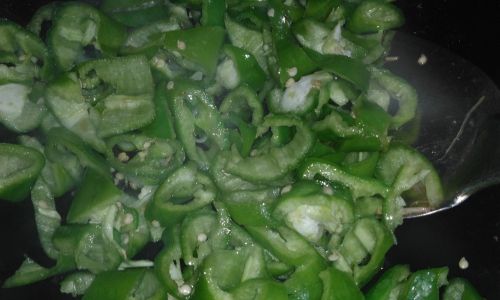
- Garlic and Ginger: These form the flavor backbone of the dish. Fresh garlic cloves and a knob of ginger add a pungent, aromatic kick.
- Soy Sauce: A staple in Asian cooking, soy sauce imparts umami and saltiness. Opt for light soy sauce for a milder flavor or dark soy sauce for a richer, caramelized hue.
- Oyster Sauce (Optional): For depth and a hint of sweetness, oyster sauce pairs beautifully with green peppers. Vegetarian alternatives, such as mushroom-based sauces, work equally well.
- Rice Vinegar or Shaoxing Wine: A splash of acidity or a touch of rice wine brightens the dish and balances the richness.
- Sesame Oil: Drizzled at the end, toasted sesame oil adds a nutty aroma and rounds out the flavors.
Protein and Add-Ins (Optional):
While the recipe shines in its vegetarian form, adding protein like sliced chicken, beef, or tofu can transform it into a hearty meal. For a plant-based twist, consider stir-fried mushrooms or crispy tempeh.
Preparation: The Key to Crisp, Flavorful Peppers
-
Washing and Drying:
Rinse the green peppers under cool water and pat them dry thoroughly. Excess moisture can lead to steaming instead of stir-frying, resulting in soggy vegetables. -
Cutting Technique:
The way you cut the peppers affects both texture and cooking time. For even cooking, slice them into uniform strips or bite-sized pieces. Remove the seeds and white pith to minimize bitterness. -
Mise en Place:
Stir-frying is a quick-cooking method, so have all ingredients prepped and within arm’s reach. Mince the garlic and ginger, measure the sauces, and slice any additional vegetables or proteins.
The Cooking Process: Heat, Motion, and Timing
Stir-frying is as much a dance as it is a cooking technique. It requires high heat, constant motion, and an intuitive sense of timing. Here’s how to achieve wok hei—the coveted “breath of the wok” that imparts a smoky, charred flavor.
-
Heating the Wok:
Place your wok (or a large skillet) over high heat. Allow it to become screaming hot—this ensures proper searing and prevents sticking. Add a neutral oil with a high smoke point, such as peanut or canola oil, and swirl to coat the pan.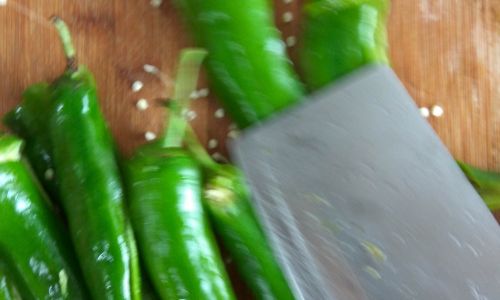
-
Aromatics First:
Toss in the minced garlic and ginger. Stir-fry for 10–15 seconds until fragrant but not browned. Overcooking aromatics can introduce bitterness, so timing is crucial. -
Adding the Green Peppers:
Introduce the sliced peppers to the wok. Use a spatula or wok ladle to toss them continuously, ensuring even exposure to heat. The goal is to char the edges slightly while maintaining crispness. -
Seasoning:
After 2–3 minutes, when the peppers begin to soften but still retain their vibrant color, add the soy sauce, oyster sauce (if using), and a splash of rice vinegar or Shaoxing wine. Toss to coat evenly. -
Finishing Touches:
For added texture, sprinkle a pinch of sugar to balance the acidity or a dash of white pepper for subtle heat. If using protein, add it now and stir-fry until cooked through. -
Final Flourish:
Remove the wok from heat and drizzle with toasted sesame oil. Garnish with sliced scallions or fresh cilantro for a pop of color and freshness.
Pro Tips for Perfect Stir-Fried Green Peppers
- High Heat is Non-Negotiable: Stir-frying at lower temperatures results in steamed, limp vegetables. Invest in a wok or a sturdy skillet that can handle intense heat.
- Don’t Overcrowd the Pan: Cook in batches if necessary. Overcrowding lowers the pan’s temperature and leads to braising instead of searing.
- Taste as You Go: Adjust seasonings to your liking. A little extra soy sauce or a squeeze of lime can elevate the dish.
- Embrace Imperfection: A few charred edges add complexity and visual appeal. Don’t stress over uniformity!
Variations and Customizations
Stir-fried green peppers are incredibly versatile. Here are a few ways to adapt the recipe:
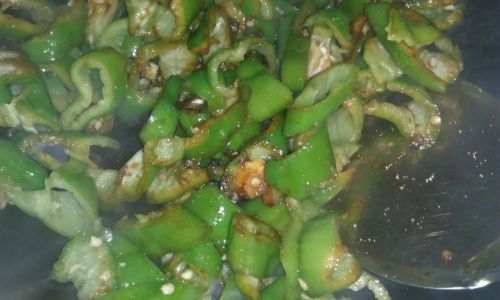
- Spicy Kick: Add sliced chili peppers or a sprinkle of red pepper flakes during the aromatics stage.
- Umami Bomb: Incorporate a teaspoon of miso paste dissolved in water for an earthy depth.
- Nutty Crunch: Toss in a handful of toasted cashews or peanuts just before serving.
- Herbaceous Twist: Swap cilantro for basil or mint for a bright, aromatic finish.
Serving Suggestions
- As a Side Dish: Pair with steamed rice, quinoa, or noodles for a balanced meal.
- Stuffed Peppers: Use larger pepper halves as vessels for seasoned ground meat or rice mixtures.
- Fajita-Style: Serve with warm tortillas, avocado, and lime wedges for a fusion twist.
The Science Behind Stir-Frying
Stir-frying is more than just cooking—it’s a scientific process. The high heat rapidly denatures proteins in the vegetables, preserving their structure and nutrients. The Maillard reaction, which occurs when sugars and amino acids interact under heat, creates complex flavors and aromas. Meanwhile, the constant tossing ensures even cooking and prevents burning.
Common Mistakes and How to Avoid Them
- Using Dull Knives: Blunt blades crush vegetables instead of slicing them, leading to uneven cooking and excess moisture.
- Skipping the Marinade (for Protein): If adding meat or tofu, marinate it briefly in soy sauce and cornstarch for tender, flavorful results.
- Underseasoning: Taste and adjust seasonings throughout the process. Flavors mellow as the dish cools, so err on the side of boldness.
- Overcooking: Green peppers should retain a slight crunch. Remove them from the heat while they’re still vibrant to avoid mushiness.
Cultural Context: Stir-Frying Through the Ages
Stir-frying traces its roots to ancient China, where it emerged as a practical way to cook quickly over open flames. The technique spread across Asia and beyond, adapting to local ingredients and palates. Today, it’s a symbol of efficiency and creativity in kitchens worldwide.
Health Benefits of Green Peppers
Green peppers are low in calories and packed with vitamins A and C, antioxidants, and dietary fiber. Their high water content aids digestion, while their crisp texture makes them a satisfying addition to any meal.
Conclusion: The Joy of Simplicity
Stir-fried green peppers are a reminder that great food doesn’t require complexity. With a sharp knife, a hot wok, and a handful of fresh ingredients, you can create a dish that’s both nourishing and deeply satisfying. Whether served as a side, a main, or a snack, this recipe invites you to savor the beauty of simplicity—one crisp, flavorful bite at a time.
So, the next time you’re faced with a mountain of green peppers, don’t hesitate. Fire up your wok, embrace the sizzle, and let the magic of stir-frying transform a humble vegetable into a culinary masterpiece. Your taste buds—and your dinner guests—will thank you.
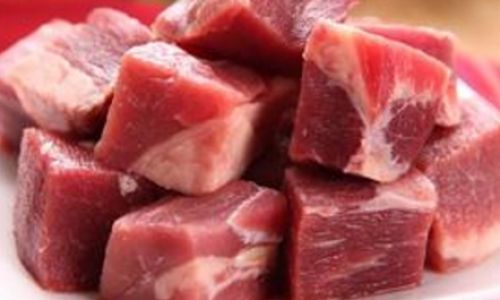
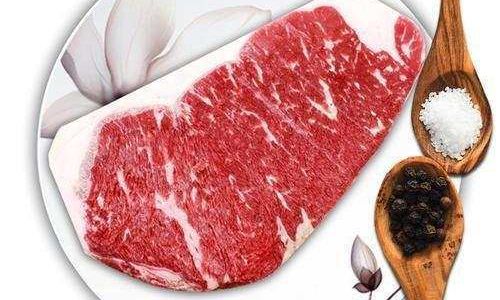
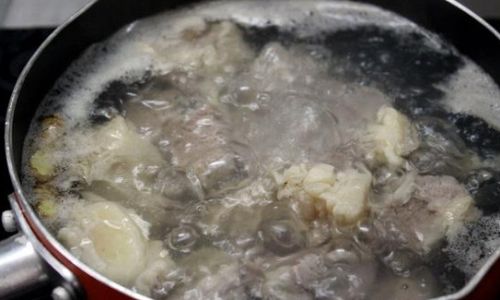


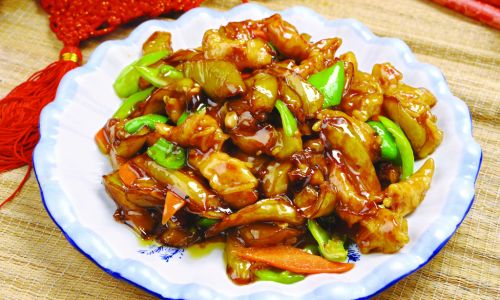
0 comments